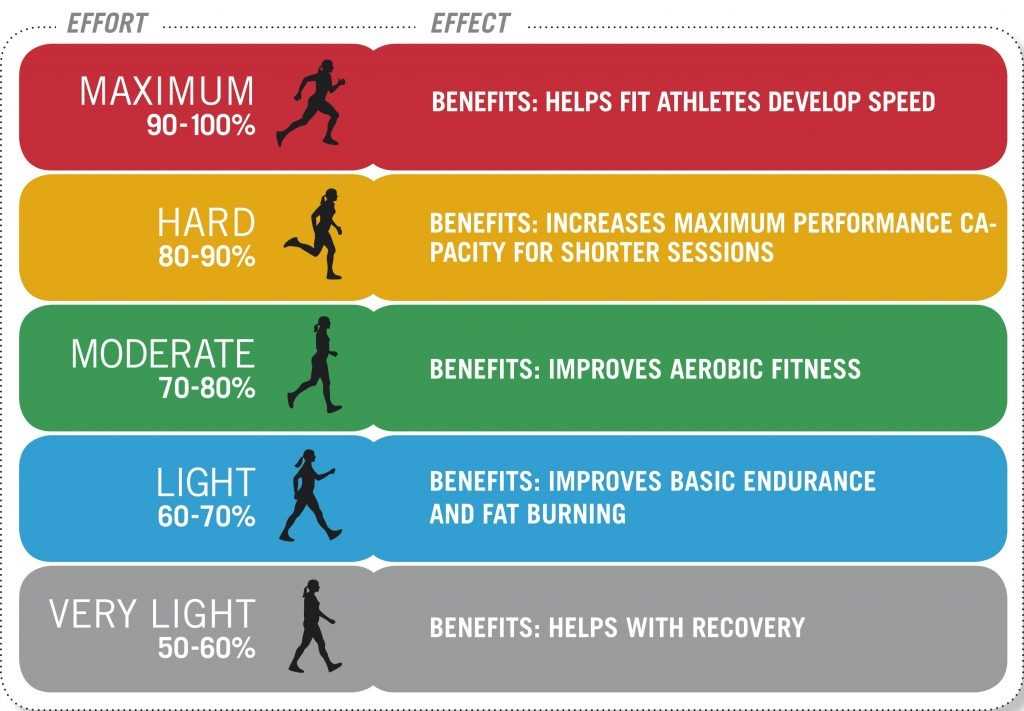If you check any cardio machine today, be it treadmill, cross trainer or stationary bike, there is a special button where it is written “Fat Burning Zone”. This means that if you perform a workout in this particular zone you will burn maximum amount of fat in a given time.

In fact, users are mostly clueless about what it means, and are happy to use anything which promises even an extra gram of fat burn. But because this part is a bit complicated, so it’s easier to fall for such myths, than to get deep into the concepts. Let’s make this part simpler and understand.
For any workout, our body primarily uses two fuel sources, i.e. fat and carbohydrates. What fuel source the body uses, depends on the intensity of the workout. At low intensities the body uses fat as the primary source of fuel. Carbohydrates, on the other hand, are a faster source of energy. Our body uses carbohydrates to fuel intense, quick and explosive movements.
Acc. to a 2011 study, “Carbohydrates and fats are oxidized simultaneously, but their relative contribution depends on a variety of factors. In healthy subjects, substrate utilization during rest is highly dependent on carbohydrate availability. During exercise, changes in substrate utilization are highly influenced by exercise duration and intensity. The longer the time spent exercising, the higher the contribution of fat as an energy substrate. With increasing intensity, the contribution of carbohydrates to energy expenditure increases and the contribution of fatty acids to energy expenditure decreases. Substrate utilization under the same exercise intensity is affected by the exercise mode.”
Now, when we talk about low intensity, it’s less than 40% VO2 max. Hearing the word, fat burn, most people will rush to adopt any exercise method which promises them exclusive fat burn. That’s where the myth of ‘Fat Burning Zone’ originated.
Before we move on, understand that, fat which the body uses for energy is also drown from two sources in the body, i.e. the Subcutaneous fat & from Intramuscular fat deposits. As the intensity of the exercise increases the fat burning increases to a particular level, where it peaks, and then decreases. Stored intramuscular fats are the main source during moderate to higher intensities of exercise.
A 1993 study, showed that peak fat oxidation occurs at 65% VO2 max. Another study in 2002, discovered that maximum fat oxidation occurred within a range of 55 to 72% VO2max. The research also showed that fat oxidation falls off quickly beyond intensities equivalent to 75% VO2max or greater, & contribution of fat oxidation to energy expenditure became negligible above 86 to 92% VO2max.
So the ‘Fat Burning Zone’ occurs often between 50-70% of an individual’s maximum heart rate, which is equivalent to moderate physical intensity exercise.
However, the fact cannot be denied that there is exclusive fat burn at a particular intensity during workout but what one needs to understand is that the percentage of fat burn is very small.
What matter is the total energy expenditure rather than just the amount of fat burn. Since working at higher intensities, i.e. close to your lactate threshold burns more total calories. In fact, the calorie burn during the workout is not even considered important, what matters is the amount of calories a person burns 24-48hrs or more post-workout or something we have understood as EPOC.
After a high intensity exercise the body’s metabolism remain elevated converting stored calories primarily from free fatty acids to energy to return the body to homeostasis.
Acc. to coach Brad Schoenfeld, there is an associated increase in the secretion of both growth hormone and noradrenaline—hormones that are integrally involved in the fat burning process—resulting in an increased utilization of fat of fuel. EPOC is intensity dependent—the harder you train, the more calories you expend following training. That’s why you need to push yourself as hard as you can during your high-intensity intervals, going as close to all-out as possible.
For e.g. if you do a leisure walk for 45 min, and burn 200 calories, out of which 150 are from fat. On the other hand, you perform a session of high intensity sprints or a weight training session, burning over 600 calories, of which just 250 are from fat, and rest from carbs.

The reason high intensity workouts or resistance training workouts give you more bang for the buck, is because your muscle cells, have a fat burning powerhouse called as the mitochondria. These mitochondria are responsible for the production of energy. More the muscle mass, more amount of mitochondria, and more the fat burning capacity of the body.
Now, your body needs a strong reason to produce more mitochondria. This reason is weight training and high intensity workouts. These workouts create a large demand for energy above what your body can already produce, your body is forced to create new mitochondria in order to be prepared for the next time your muscles call on that needed extra energy.
When we say your muscles are metabolically active, we are talking about these mitochondria, which are a guzzler of energy and need constant feeding. They are like a furnace which always needs fuel to remain hot. Its preferred fuel, fatty acids.
People think that during high intensity workout the primary source of energy is carbs and that is why fat burn is less. But, have you ever seen a fat sprinter? Sprinters, bodybuilders etc. primarily train anaerobically using carbs during the workout. Yet, they are leaner and more muscular as compared to their long distance counterparts who train more aerobically.
What one needs to understand is that fat burning and weight loss is more about total calorie burn than only fat burn during workout. in simple words, most people working out on a cardio machine in the gym focussing on the fat burning zone are simply wasting time doing less efficient exercise.
The ‘Fat Burning Zone’ is not exactly a myth, but it’s useful in one particular case i.e. for long endurance athletes. if you are running a marathon or a triathlon, staying in the fat-burning zone can make sure that you have plenty of fuel to sustain you for long times. You can conserve your limited glycogen reserves and workout for much longer if you stay within this zone, but this is not usually important to general athletes and fitness enthusiasts.
Acc. to coach Brad Schoenfeld, “the human body is a dynamic organism and constantly adjusts its use of fat for fuel. This process is governed by a host of factors (including enzyme levels, substrate availability, internal feedback loops, etc.). If you expend more calories than you consume, your body will shift to a fat burning mode and mobilize excess adipose as a source of energy. Thus, from a fat loss perspective, high-intensity exercise burns more fat calories on an absolute basis than lower intensity activities.”



